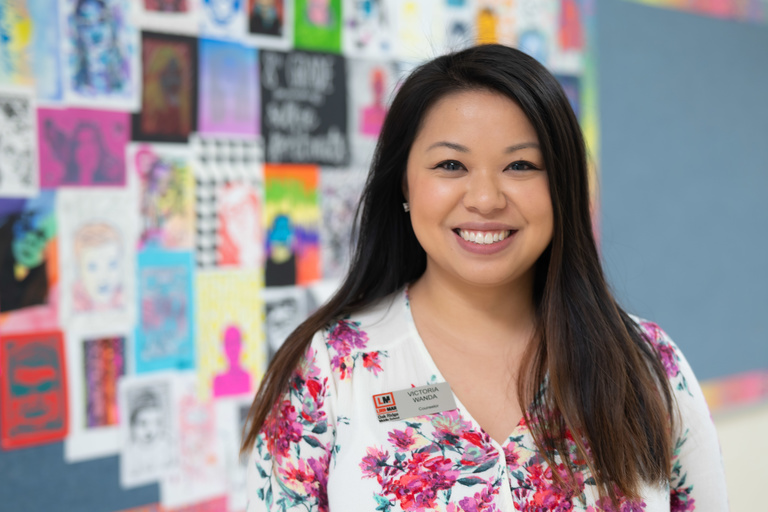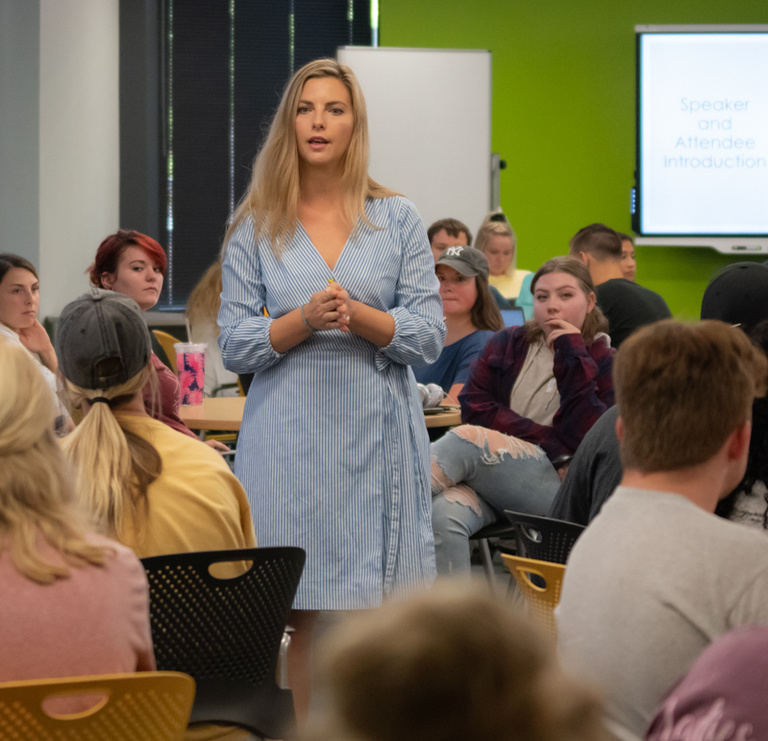By Sara Nelson
The statistics are sobering. One in six children in the United States has a mental health disorder. Suicide is the second leading cause of death among people aged 15 to 24, and suicide rate among ages 10 to 24 has increased by 56 percent in two decades.
In today’s world, K-12 students are experiencing higher levels of anxiety, depression, and trauma than previous generations, making the need for school mental health resources more urgent than ever.
In Iowa, 14 percent of children experienced at least one major depressive episode, and 59 percent of those children did not receive any mental health services (Mental Health America). Additionally, 20 percent of Iowa high school students reported seriously considering suicide in 2017, according to the Centers for Disease Control. Nationally, youth mental health is worsening with increasing rates of depression and thoughts of suicide.
Approximately 72 percent of children in the United States will have experienced at least one major stressful event—such as witnessing violence, experiencing abuse, or experiencing the loss of a loved one—before the age of 18 according to the American Civil Liberties Union.
“Whether it’s divorce, some type of emotional abuse, or any of the other traumatic events children go through, trauma influences the child’s thinking about themselves, which can lead to depression. It’s all interconnected,” says Armeda Wojciak, assistant professor in Couple and Family Therapy. “Trauma is at the core of inequities, social emotional learning, and mental health. The root of all of that is some type of trauma if we label it as that. What childhood trauma does to our body’s stress response system is going to impact everything we interact with after that.”
Wojciak built a trauma-informed intervention program called We Can! Building Relationships and Resilience, creating a year-long curriculum on understanding the impact of trauma on student behaviors and learning as well as strategies to help build resilience in all students. The program initially began in one school, and has now been used in 16 schools and five school districts, and instructs teachers and school officials on how to recognize and help children with Adverse Childhood Experiences (ACES).
“Kids are not choosing to have a lot of these negative classroom behaviors. It is the result of previous experiences and how that has influenced their brain structure and function,” Wojciak says. “That impacts how they are going to interact with people, how they are going to sit in a classroom, or be unable to. If you have that understanding, it changes the way you interact with students.”
Trauma also has a large impact on academic achievement. It can influence a student’s attendance, their ability to complete coursework, and changes the way students are able to learn.
“If a child is dysregulated, they are not going to be in the thinking part of the brain which is associated with learning, that means that they are sitting in class and aren’t able to encode that information,” Wojciak says. “With children that have experienced trauma, the working memory can be impaired and they can have difficulty with recall”
Additionally, children who have experienced trauma tend to be the students who are sent out of the classroom due to disruptive behavior more often, leading to them missing content and always having to play catch-up.
“Trauma creates toxic stress. If you are constantly in the fight, flight, or freeze stress response system because your environment is unsafe, which kids can feel like in school, your brain is structurally and functionally altered,” Wojciak says. “When you’re sitting in class, your brain is already on heightened alert. Teachers will say that a student’s behavior escalated quickly, or that a student went from 0 to 60 out of nowhere. The reality is, that kid was never at 0. They are always oscillating at 40. They are always in a heightened state and sensitive to the environment as a result of the trauma they’ve experienced.”
Wojciak hopes entire schools and districts create systems that are safe and welcoming to all children, and that helps staff understand how trauma affects their students.
“By having trauma informed practices be universal supports, staff can support each other and build capacity. School becomes that safe place for all kids. There’s a misconception that being trauma-informed means you’re being soft or letting kids get away with things,” Wojciak says. “But, by being in a trauma-informed environment, every child is able to do better, because the kids that were going to do well no matter what will still do well. But the kids that would have had a hard time will be able to do well too. You are catching everything before it comes problematic.”
An overwhelming amount of research shows that youth in America are experiencing a mental health crisis. However, according to the Journal of Adolescent Health, students are 21 times more likely to visit school-based health centers for treatment than anywhere else.
The American School Counseling Association recommends one counselor per 250 students. However, the American average is 482 students to one school counselor. Many schools, particularly elementary schools, do not have school counselors at all or share one counselor across multiple schools. Often times, when schools are struggling for resources, counselors are the first role cut.
“There’s a myth that social and emotional skills don’t have anything to do with academics. But research tells us that social and emotional skills are at the center of academic achievement. If you lack those social and emotional skills, academic achievement will be impacted by that,” says Gerta Bardhoshi, associate professor in Rehabilitation and Counselor Education.

Victoria Wanda
Victoria Wanda (MA ’14), a University of Iowa College of Education School Counseling alumna, has roughly 400 students as part of her caseload at Oak Ridge Middle School in the Linn-Mar Community School District. On a typical day, Wanda helps students with both behavior and academic interventions, holds individual counseling sessions, and leads small-group counseling, focusing on social skills, leadership, and confidence building.
“We’re trying to reach all kids, not just the kids who are struggling with things going on at home. Our goal is to connect with every student no matter what background, where they come from, or the situation they are in,” Wanda says.
In the past, school counselors focused on the academic needs of students. Now, counselors are expected to handle academic, personal, social, and career domains for all students.
“There is so much research that shows that if students have a trusted adult inside and outside of school, student engagement will be a lot higher, and dropout rates will decrease,” Wanda says. “School counselors are crucial in bridging the connection between students, parents, teachers, and administrators. We see kids at school for the majority of the day and can see if kids are acting differently and can provide them with resources.”
While the role of school counselors is changing and growing, many counselors are facing too many demands and not enough resources to meet those demands.
“There is an expectation that school counselors be everything for everyone, they are being pulled in multiple directions addressing mental health needs, academic needs, career needs, on top of other duties,” Bardhoshi says. “There is a high demand for school counselors to do a number of things and some don’t necessarily fall under their purview.”

Gerta Bardhoshi
A lack of resources is particularly prevalent in rural or low-income communities, where there may be very few or no community mental health resources to send students to when they need additional mental health care.
“Lack of community resources and extensive mental health counseling can make counselors feel like there is no one to help their students, which can be demoralizing because you can’t help your students the way you want to,” Bardhoshi says.
Due to emotional distress and exhaustion that stems from this lack of resources, school counselors can be particularly susceptible to burn out. According to a national study Bardhoshi recently completed, 20 percent of school counselors are in the first stages of burn out.
“If burn out continues to progress and there are no interventions to make that better, school counselors not only feel ineffective, but they are in a place where they cannot give emotionally and they are not able to meet the needs of their students, and students aren’t receiving the best help they can get,” Bardhoshi says.
The emotional nature of the role contributes to the compassion fatigue that can lead to burn out.
“There are a lot of things our kids go through that we can’t control. Some of these kids go through very sad things, and there’s only so much we can do,” Wanda says. “In this profession you’ll see students suffer from trauma and you want to help so much that sometimes you have to find a balance between taking care of others while engaging in self-care strategies. This piece is crucial for all of us in the helping profession.”
Bardhoshi’s research has found that a good relationship with their school principal and a positive work climate are good protections against school counselor burn out.
“Even if school counselors are feeling like they have an increased demand, if they have a supportive administration and if they are in an environment where everyone is working as a team towards common goals, school counselors can manage,” Bardhoshi says.
Bardhoshi says that a key component of helping students and counselors be successful is understanding how social and emotional learning impacts academic outcomes.
“If we were all on the same page that social and emotional skills are tied to academics, it would make a school counselor’s role so different,” Bardhoshi says. “Social and emotional skills are just as important as academic skills. It’s just as important to teach kindergartners how to self-regulate as it is how to identify letters. It’s not this or the other, it’s a holistic approach.”
